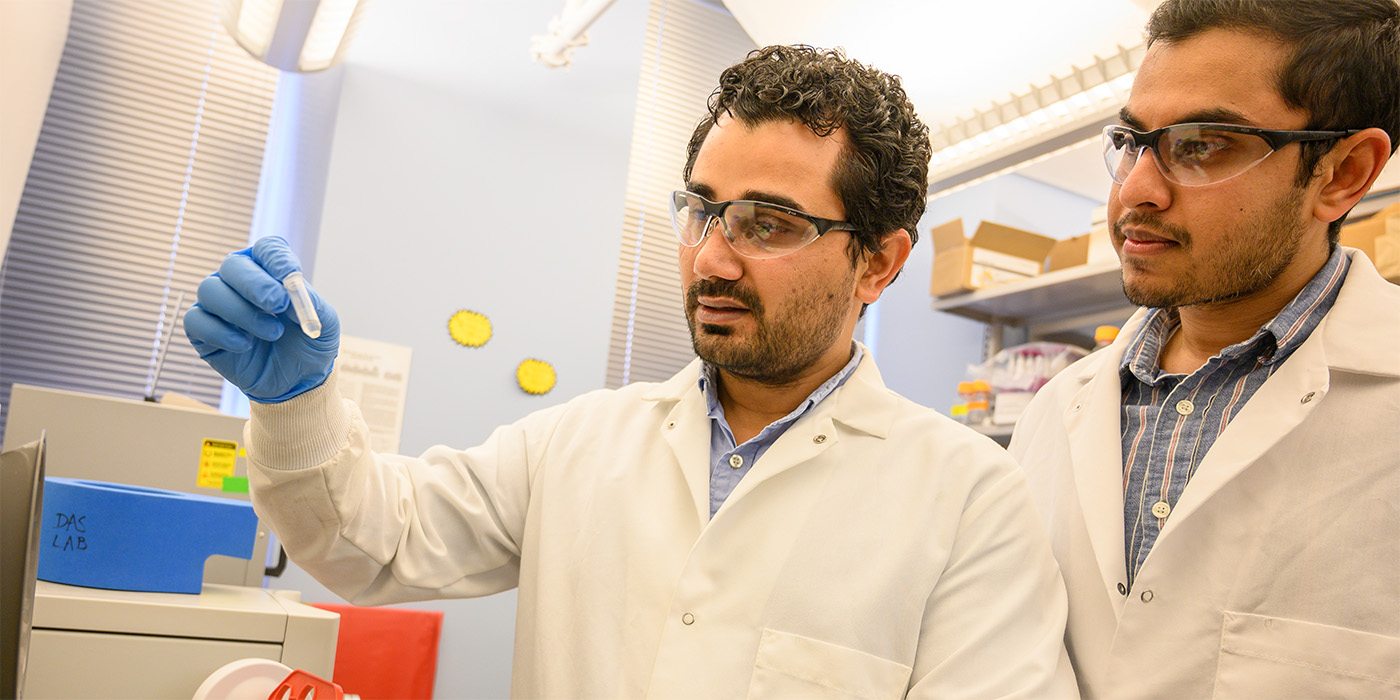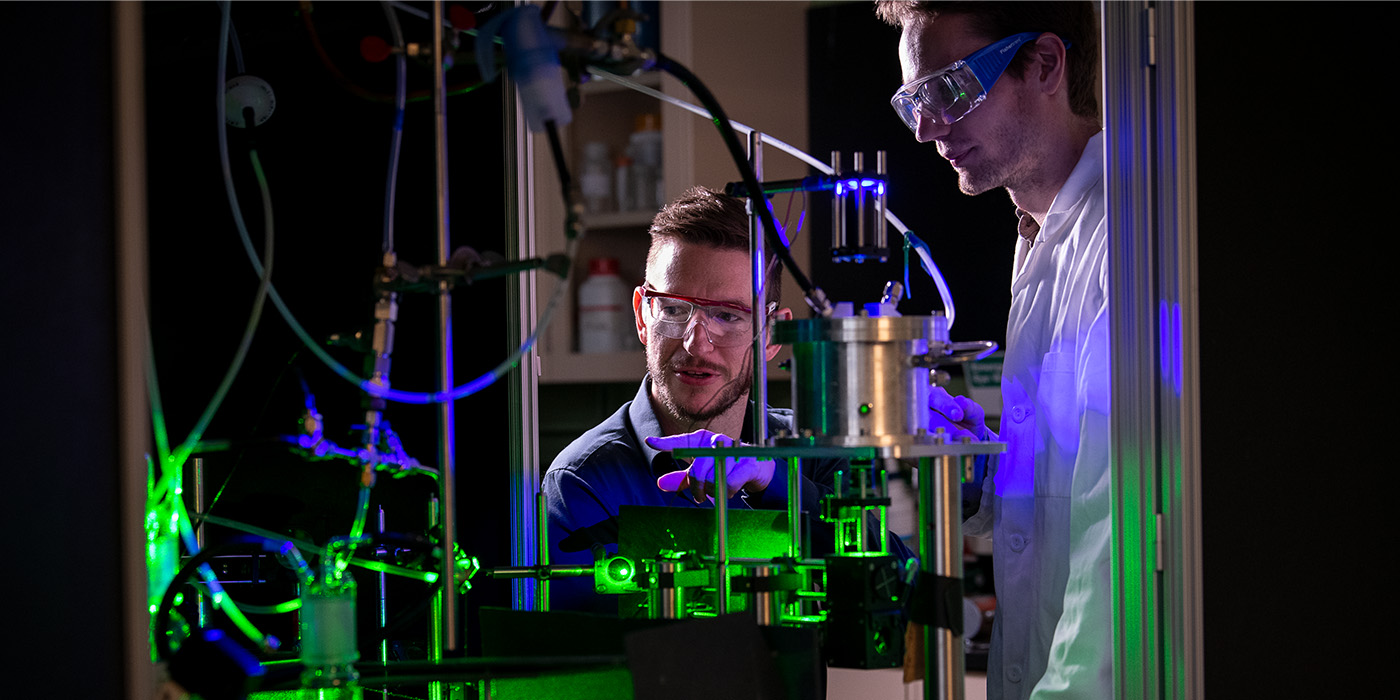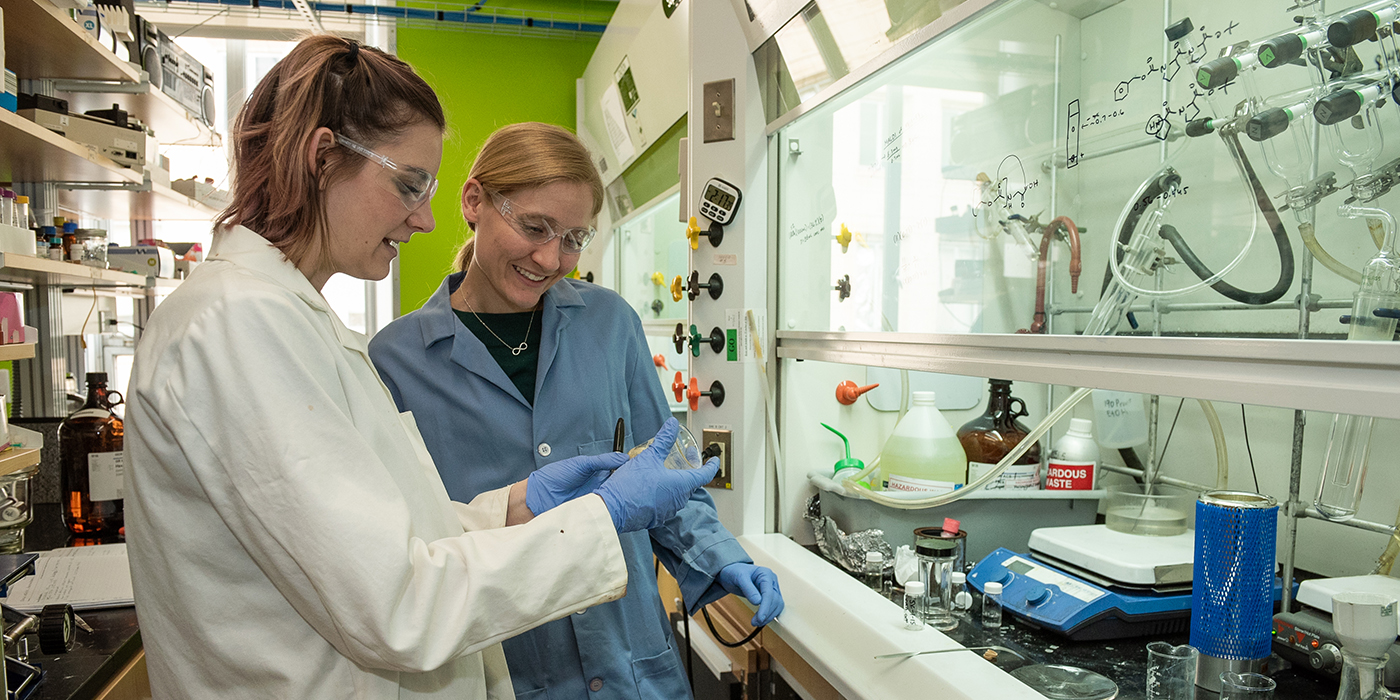
“All-Purpose” Platform for Exosome-Mediated Delivery
By engineering exosomes with a DNA-cholesterol tether, an interdisciplinary team of chemists and biomedical engineers have created an “all-purpose” platform for using exosomes to deliver cargo in living organisms. Their method can be used to develop a new class of hybrid nanoparticles to deliver therapeutics aimed at treating or preventing a variety of diseases, including anti-cancer drugs and immunotherapies for organ transplantation.
Doctoral candidates Sushil Lathwal and Sai Yerneni, working with Associate Professor of Chemistry Subha R. Das and Professor of Biomedical Engineering Phil Campbell, showed that the single stranded synthetic DNA with attached cholesterol could bind with a complementary strand of DNA linked to a bioactive agent. As a result, the researchers were able to use the tether to connect a number of different types of cargo to the surface of an exosome, enabling a number of functions. For example, the DNA tether could be used to label an exosome with a dye molecule for imaging studies or to attach an antibody or drug to an exosome for the treatment or prevention of a disease.
“What this allows us to do, really for the first time, is directly probe and understand how particles evolve in the atmosphere.” – Ryan Sullivan
Aerosol Optical Tweezers Advance Understanding of Chemical Evolution of Airborne Particles
Two new studies led by faculty in Carnegie Mellon’s Center for Atmospheric Particle Studies show how aerosol optical tweezing can allow scientists to scrutinize the components of the atmosphere with new precision.
“What this allows us to do, really for the first time, is directly probe and understand how particles evolve in the atmosphere,” said Ryan Sullivan, associate professor of chemistry and mechanical engineering, who is the first scientist in North America to make use of optical tweezer technology to study aerosol particles suspended in air.
In a study published in the journal Chem, Sullivan and his team built a predictive formula for when a phase separation would occur when different organic materials are oxidized under different conditions and what the morphology of that resulting complex phase-separated particle, including secondary organic aerosol, would be.
In another new study, the researchers developed a technique to precisely measure the pH of tweezed droplets to determine their acidity. That work was published in the journal Analytical Chemistry.
Runaway Mitochondria Cause Telomere Damage
A technology developed by Professor of Chemistry and Biological Sciences Marcel Bruchez has been used to provide the first concrete evidence that sick mitochondria pollute the cells they’re supposed to be supplying with power.
In the study, researchers at the UPMC Hillman Cancer Center used Bruchez’s technique, which produces a damaging reactive oxygen species, in this case singlet oxygen, in mitochondria when exposed to light. This kicks off a mitochondrial chain reaction that wreaks havoc on the cell, down to the genetic level. The free radicals pummel the cell nucleus. While the DNA seems to remain intact, the telomeres — the protective endcaps on each chromosome that allow them to replicate and replenish — experience significant damage.
When mitochondria were inactivated in cells, they found that without the mitochondria to perpetuate the reaction, there was no telomere damage. The findings could be used to improve photodynamic cancer therapy, which bombards tumors with reactive oxygen species and light.
“We’re using the power of chemistry to tell the biology what to do.” – Stefanie Sydlik
‘Using the Power of Chemistry’ to Heal Our Broken Bones
When she was in graduate school, Assistant Professor of Chemistry Stefanie Sydlik suffered a cartilage injury. This got her to start thinking about and researching the biological processes behind healing in the body, especially the healing of bones.
“What we’re trying to do is make this obsolete,” Sydlik said, pointing to an x-ray of her wrist where she had a titanium plate implanted after breaking it in 2016. This hardware is often used as a scaffold for bones to heal around after severe injuries, where it’s more likely that the bones may heal incorrectly.
“Bone is a super interesting material in the body because we have the ability to regenerate it,” Sydlik said. “The question is: how do we tap into that natural healing response so we can heal major fractures the same as minor fractures?”
In a study published in the Proceedings of the National Academy of Sciences, Sydlik and her team were able to modify graphene with calcium phosphate to create a material that avoids rejection by mimicking the composition of bone found in our bodies and degrades when it’s no longer needed.
“We’re using the power of chemistry to tell the biology what to do,” Sydlik said.



